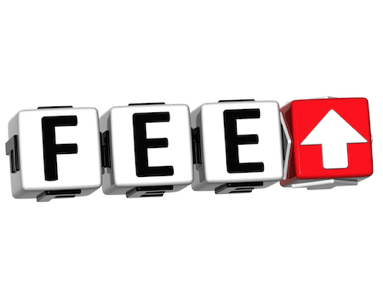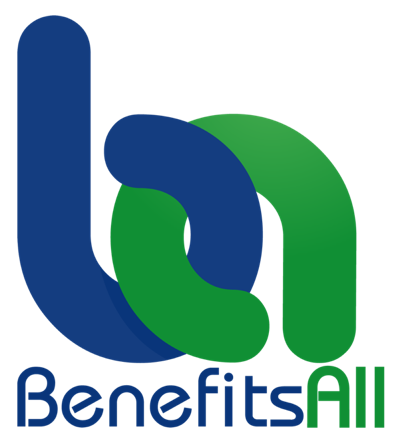It’s Not Skepticism Or Caution That Keeps Us From Upending Our Bloated Health Care System, It’s Unwillingness

Democratic presidential candidate, Bernie Sanders, relentlessly scoffs at the idea that Wall Street is Too Big To Fail. But it is his proposal to provide Medicare For All that exposes the real industry that is, in many people’s mind, Too Big To Fail—health care. A recent
Washington Post article all but admits this and the Post is not alone in its thinking.Throughout this very long campaign cycle countless politicians, policy wonks, economists, writers and everyday people have characterized Medicare For All as unrealistic or in Hillary Clinton’s recent words, “…too good to be true...” Seriously, how many euphemisms can opponents use to say what they’re really thinking—the health care industry is such a big part of our economy that we can’t change it. They are, however, right about health care being a large part of the U.S. economy in terms of money and jobs.
- Health care expenditures make up 17.5% of the nations gross domestic product (GDP). That means it is basically about 20% of the entire U.S. economy
- We spent a little over $3 trillion for health care in 2014
- The health care industry employs over 13 million workers and is the largest private sector business sector
It’s one thing to be concerned about the impact on the economy if the health care industry undergoes a major overhaul overnight, it’s another to think we should take a break from addressing health care’s growing affordability issues. However, it seems that every proposed change to make our health care system more transparent, accountable and affordable is met with excuses or snark.
Electronic Health Records (EHR) – too expensive to purchase; time-consuming to evaluate and implement; have privacy and system compatibility issues; lack protections for proprietary information
Drug Price Controls – stifle innovation; scare away investors; halt production
Price Transparency – ignores quality standards; too difficult to determine; ignores geographical price differences; limited number of shoppable services to make a difference
Mission Accomplished… Continue Reading...
Unions Should Support The Health Insurance and Retirement Savings Needs Of All Workers
Organized labor deserves a lot of credit for its early efforts at getting health insurance and retirement benefits for workers. But labor also has a history of being slow to adapt to economic, social and political changes that challenge its mission. This has led to a slow erosion of labor union membership in the private sector. It has also resulted in attacks on the health and retirement benefits labor fought so hard for.
I applaud labor's support for the Affordable Care Act (aka Obamacare), and its wider support for universal health care. However, ironically, some of labor's biggest concerns these days involve provisions of Obamacare it sees as unfavorable to its members--the perceived threat to multiemployer health care plans and the "Cadillac tax" (an excise tax on high value health plans). Granted, these provisions are not favorable to unions as they currently operate. But that's the public policy point. Union friendly policy makers are less concerned with the role of unions and more concerned about health and retirement plan access and affordability for everyone. I'm concerned that labor's historical reality of focusing on its narrow interests and its members may cause it to miss out on an opportunity to help achieve the universal health and retirement benefits it claims it wants.
There are several health insurance and retirement plan issues unions can support, and that are growing in economic, social and political importance.
Health care price transparency. Doctors, hospitals and insurance companies have given little substantive attention to the need for providing prices for medical care to consumers. Even as consumers are forced to assume a greater share of the cost of care by way of large deductibles, the medical care establishment consistently pushes back on real price transparency.
- Labor unions should advocate for a change to the Employee Retirement Income Security Act (ERISA) to mandate real medical price transparency by insurers and health care providers. ERISA is a federal law that sets standards for private health and retirement plans. Currently, many insurers provide limited tools that give questionable estimates of cost for some care. Providers offer even less assistance and routinely prescribe care without any consideration of its price and if a cheaper alternative is available.
Employee Benefit Plan Fee Transparency and Justification Continues To Pick Up Steam

News about fee disclosure and excessive fee lawsuits are nothing new in the workplace retirement plan arena. In 2012 the U.S. Department of Labor (DOL) passed rule 408(b)(2) requiring retirement plan services providers to disclose plan fees. Each year since participants in 401(k)-style retirement plans receive these notices. Fee notices are important because for the first time plan participants can see how fees impact retirement plan balances. And they see that the higher the fee, the greater the reduction to their retirement plan balance.
Not so surprisingly, the retirement plan services community did not respond positively to this new requirement. They’ll never admit it but the system they created made fee disclosure harder work than it needed to be. In particular, 12b-1 fees, also known as revenue sharing, an opaque practice by design proved difficult to untangle. Also, service providers felt like they were doing a lot of work to produce notices that very few workers would even look at. By some estimates, they claimed that about 1% of the workers receiving the notices would read it in its entirety and ask questions about it.
No one knows if these estimates were right, but what did happen was an increase in retirement plan fee litigation. Workers started questioning plan decisions and non-decisions that led to what they considered excessive plan fees. Plan participants are suing both retirement plan service providers and employers for having excessive plan fees. Continue Reading...
Focusing On The Limits Of Healthcare Price Transparency Tools Can Limit Their Growth
There are primarily four very influential groups that decide what health insurance plans workers can access and the price of those plans. These groups include employers, policymakers, insurance companies, and medical care professionals and administrators. Unfortunately, these groups are doing very little to control healthcare costs.
Employers do not use their buying power and size to demand lower health plan premiums. Policymakers do not support regulations to control medical care prices. Health insurance companies do not work with regulators and health care professionals to improve administrative efficiencies. And medical care professionals and administrators ignore the impact of high medical care prices on consumers.
So with still no say on health plan design and price, workers now have primary responsibility for dealing with high healthcare costs. And they have no choice but to use the few tools available to them—wellness programs and price transparency tools. Wellness programs aren’t turning out to be the cost savers that everyone wanted them to be, but price transparency tools could. But first the focus needs to change from the limitation of transparency tools to making them more robust. Continue Reading...
Today's Health Care Price Tools Are a Good First Step

The most difficult thing for employees to understand about their health insurance is how much they have to pay when they go to the doctor’s office. The Summary of Coverage outlines what the deductible, coinsurance and copay amounts are for most services. It indicates that out-of-pocket costs are less if received from an in-network medical professional. It states the maximum amount participants pay out-of-pocket in a plan year.
However, it does not inform employees about the many situations that can arise that increase their out-of-pocket costs. For example, doctors who require an office visit and copay to renew a prescription. Or that even though Dr. X and Dr. Y are both in-network, Dr. X charges more for his service which means greater out-of-pocket costs for patients. It also does not remind employees to use health care price transparency tools before receiving care, but employee benefit pros can.
Health Care Price Transparency Tools
Nearly everyone agrees that consumers cannot take control of their health care buying decisions without basic price data. So insurers, non-profits, and private organizations are creating and enhancing health care price transparency tools to help consumers access this data. In fact, before the recent release of Medicare price data, all major U.S. healthcare insurers provided a price transparency tool to its members. And just last week UnitedHealthcare announced it was making its free health care price app, Health4Me, available to the public. The app contains average local prices of hundreds of medical services.
Continue Reading...


 Denise Perkins
Denise Perkins




